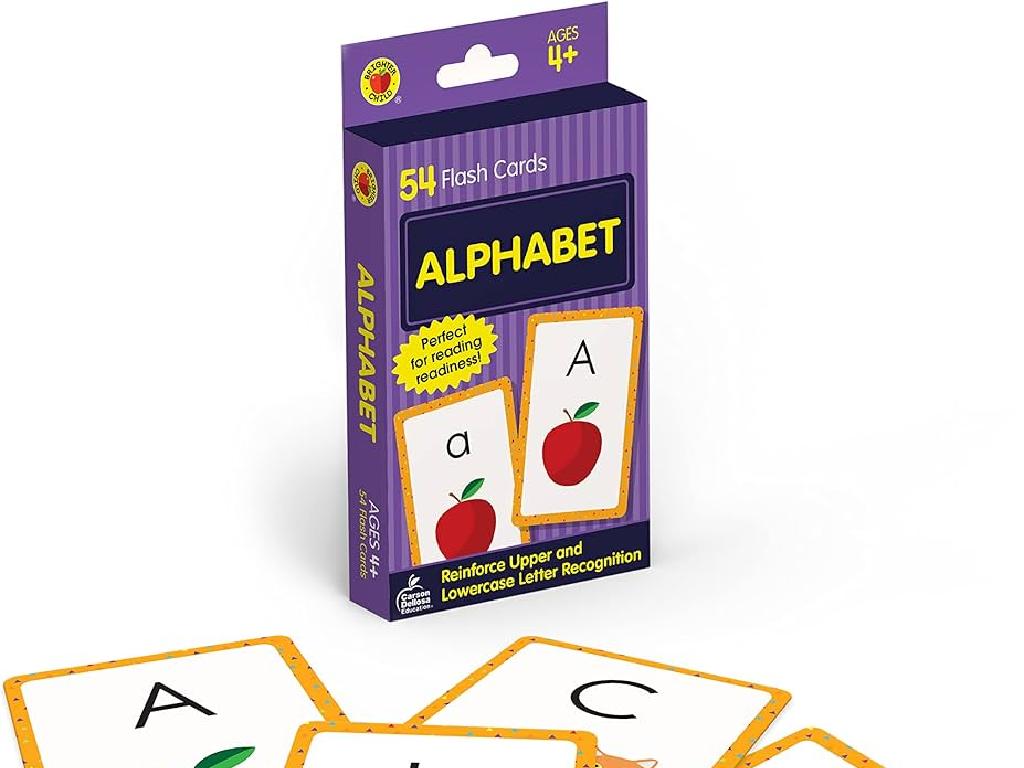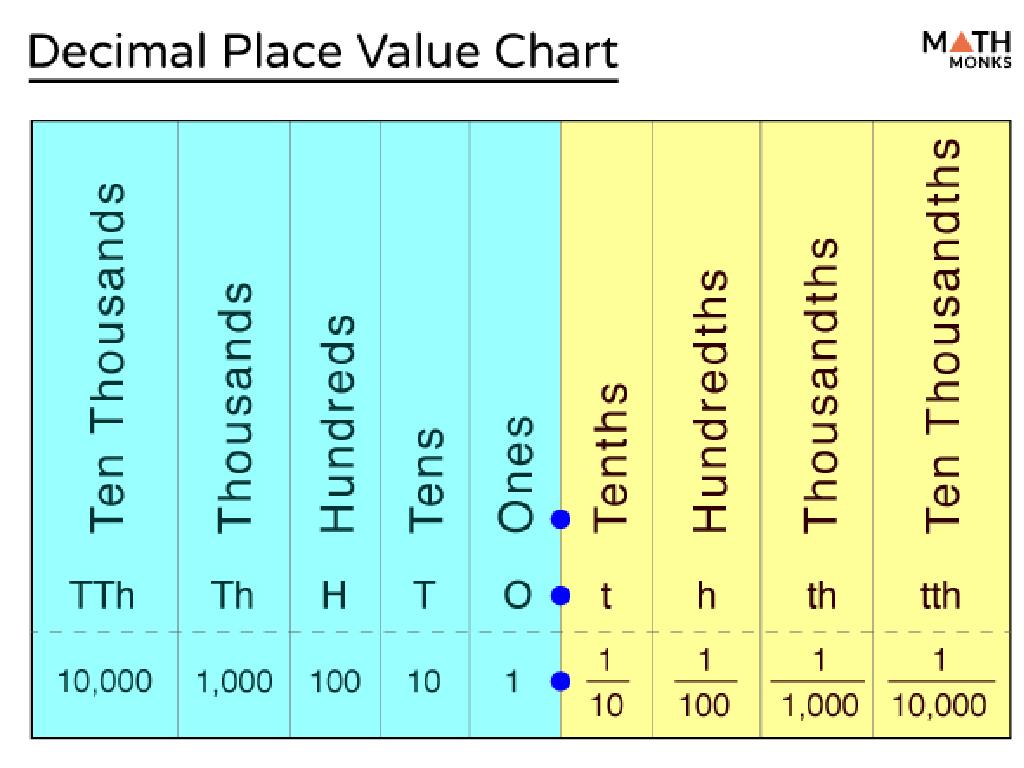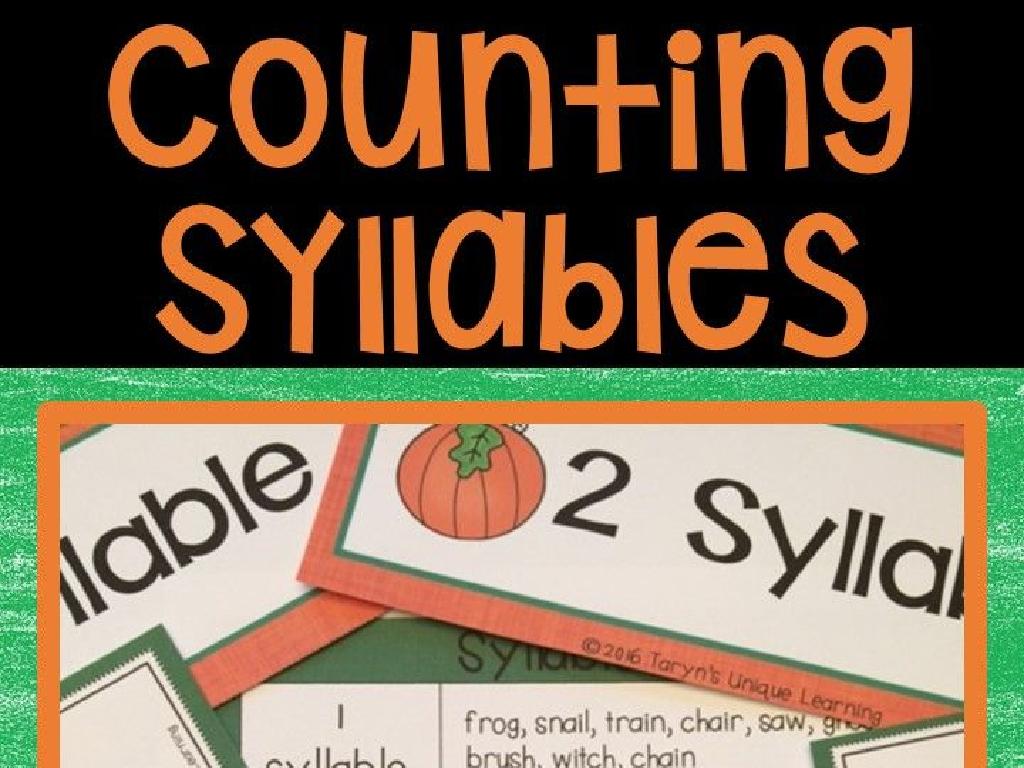Balance Addition And Subtraction Equations - Up To 20
Subject: Math
Grade: Second grade
Topic: Mixed Operations: One Digit
Please LOG IN to download the presentation. Access is available to registered users only.
View More Content
Balancing Equations in Mixed Operations
– Learn to balance equations
– Addition and subtraction connection
– How adding and subtracting affect each other
– Equations as a scale
– Both sides of the equation must be equal, like a balanced scale
– Practice with numbers up to 20
– Use examples like 12 + 3 = __ – 4 to find the missing number
|
This slide introduces the concept of balancing equations within the framework of mixed operations for second-grade students. Emphasize the relationship between addition and subtraction and how they can be used interchangeably to maintain balance in an equation. Use the analogy of a scale to help students visualize the concept of balance. Provide hands-on practice with simple equations, ensuring that students understand that the sum or difference must be the same on both sides of the equation. Encourage students to think of the equal sign as a balance point and to use trial and error with numbers up to 20 to find the missing value that maintains balance.
Understanding Balanced Equations
– Equations are like seesaws
– A seesaw goes up and down but stays level when balanced
– Both sides must be equal
– If one side has a value of 10, the other side must also equal 10
– Balance using addition and subtraction
– Add or subtract numbers to keep both sides the same
– Practice with numbers up to 20
|
This slide introduces the concept of balanced equations to second-grade students by comparing an equation to a seesaw, a familiar playground equipment, to help them visualize the need for balance. Emphasize that just like a seesaw needs to be level, both sides of an equation must have the same value. Use simple addition and subtraction examples with numbers up to 20 to show how to balance equations. For instance, if one side is 5 + 5, the other side must add up to 10 as well. Encourage students to think of balancing equations as a fun puzzle where they need to make sure both sides ‘weigh’ the same. Prepare to have students practice with hands-on activities in class, using manipulatives like counters or blocks to represent the numbers and physically balance them.
Understanding Addition: Combining Numbers
– Addition means combining numbers
– Like putting together 2 toys and 3 toys to have 5 toys
– Total is the sum of numbers added
– When we add 3 and 2, the total is 5
– Example with apples
– 3 apples + 2 apples makes 5 apples
|
This slide introduces the concept of addition as a way to combine numbers to find a total. Use tangible examples like combining apples to illustrate the concept, making it relatable for second graders. Emphasize that addition is simply the process of putting together different amounts to find out how many there are in total. The example provided uses apples to show how we can add similar items to find a new amount. Encourage students to think of other items they could add together in their daily lives to reinforce the concept. Practice with additional examples in class to ensure understanding.
Understanding Subtraction: Finding What’s Left
– Subtraction means taking away
– Start with a number, then take some away
– What number is left after subtracting?
– If we have 5 apples and eat 2, how many are left?
– Practice with real objects like apples
– Example: 5 apples – 2 apples = 3 apples left
|
This slide introduces the concept of subtraction as a means of taking away from a total amount to find out what remains. It’s crucial to use tangible examples that second graders can relate to, such as subtracting apples, to make the concept more understandable. Encourage students to visualize the process by actually removing items and counting what’s left. Reinforce the idea that subtraction is not just about numbers; it’s about physically taking away and finding the difference. During the lesson, use props or draw pictures to demonstrate subtraction, and then let students practice with real objects or counters to solidify their understanding.
Creating Balanced Equations
– Both sides must equal
– Example: 3 + 4 equals 7
– Like a seesaw, both sides should be level
– Other side must add to 7
– If one side is 3 + 4, find numbers that add to 7 for the other side
– Balance with subtraction too
– If one side is 10 – 3, the other side should be 7 to balance
|
This slide introduces the concept of balanced equations to second-grade students. Emphasize that in a balanced equation, the sum or difference on one side must be matched by the same value on the other side. Use simple addition and subtraction examples that add up to 20 or less. Demonstrate with a seesaw analogy to make it relatable. For the example given, show that 3 + 4 equals 7, so the other side of the equation must also result in 7 to be balanced. Encourage students to think of different combinations that add or subtract to the same number. Provide practice problems where students can create their own balanced equations using addition and subtraction within 20.
Practice Time: Balancing Equations
– Understanding equation balance
– Example: 8 = 5 + __
– The equation is balanced when both sides equal
– Find the missing number
– Think: What plus 5 equals 8?
– Practice with different equations
– Try more: 7 = __ + 4, 9 = 2 + __
|
This slide is designed to engage second-grade students in a hands-on activity to understand the concept of balanced equations in addition and subtraction. Start by explaining that an equation is like a balance scale, both sides need to be equal. Use simple examples to demonstrate how to find the missing number that balances the equation. Encourage students to use counting objects or their fingers to find the solution. Provide several examples with different numbers for the students to solve, ensuring they grasp the concept. As they work through the problems, walk around the classroom to offer help and check for understanding. This activity will help solidify their understanding of basic arithmetic operations and the concept of equality in equations.
Let’s Play a Balancing Game!
– Create balanced equations with objects
– Use blocks or counters to represent numbers
– Work in pairs for balance challenge
– Partner up and use teamwork to solve equations
– Explore different combinations
– How many ways can you make 10? Try 5+5, 6+4, 8+2…
– Aim for the same total on both sides
|
This interactive activity is designed to help second graders understand the concept of balance in addition and subtraction equations. Provide students with manipulatives like blocks or counters to represent numbers. Instruct them to work in pairs to create equations that have the same total on both sides, emphasizing the balance concept. Encourage them to find multiple combinations that result in the same sum, fostering a deeper understanding of number relationships. As they work, circulate the room to offer guidance and ensure each pair is engaged and grasping the concept. Possible variations for different pairs could include balancing equations that equal 10, 15, or 20, allowing for differentiation based on student ability.
Class Activity: Balance the Equation
– Receive your unique worksheet
– Find the missing number in equations
– What number makes 5 + __ = 8?
– Ensure both sides are balanced
– Both sides of the equation should equal the same number
– Double-check your answers
– After solving, verify that your solution is correct
|
This activity is designed to help students understand the concept of equality in addition and subtraction equations. Distribute worksheets with a variety of equations, ensuring that each student receives a unique set. Guide them to find the missing number that makes both sides of the equation equal, reinforcing the concept that an equation is like a balance scale. Encourage students to use counting objects or draw pictures if they need help visualizing the problem. After completing the worksheet, have students pair up to check each other’s work. This peer review process will help them learn to critique mathematical reasoning and confirm their solutions. Possible variations of the activity could include using number cards, manipulatives, or creating a game where students draw equations to solve from a deck.
Balancing Equations: Conclusion
– Excellent work on equations!
– Equations must balance equally
– Like a seesaw, both sides should be level
– Practice ensures mastery
– The more you practice, the better you get
– Keep practicing at home!
|
Today’s lesson on balancing addition and subtraction equations was a success. Reinforce the concept that for an equation to be balanced, both sides must have the same value, just like a seesaw needs to be level on both sides. Encourage the students to continue practicing at home with different numbers up to 20 to become more confident in their skills. Provide them with additional worksheets or recommend educational math games that they can play to make learning more enjoyable. Remember to praise their efforts and progress to keep them motivated.






